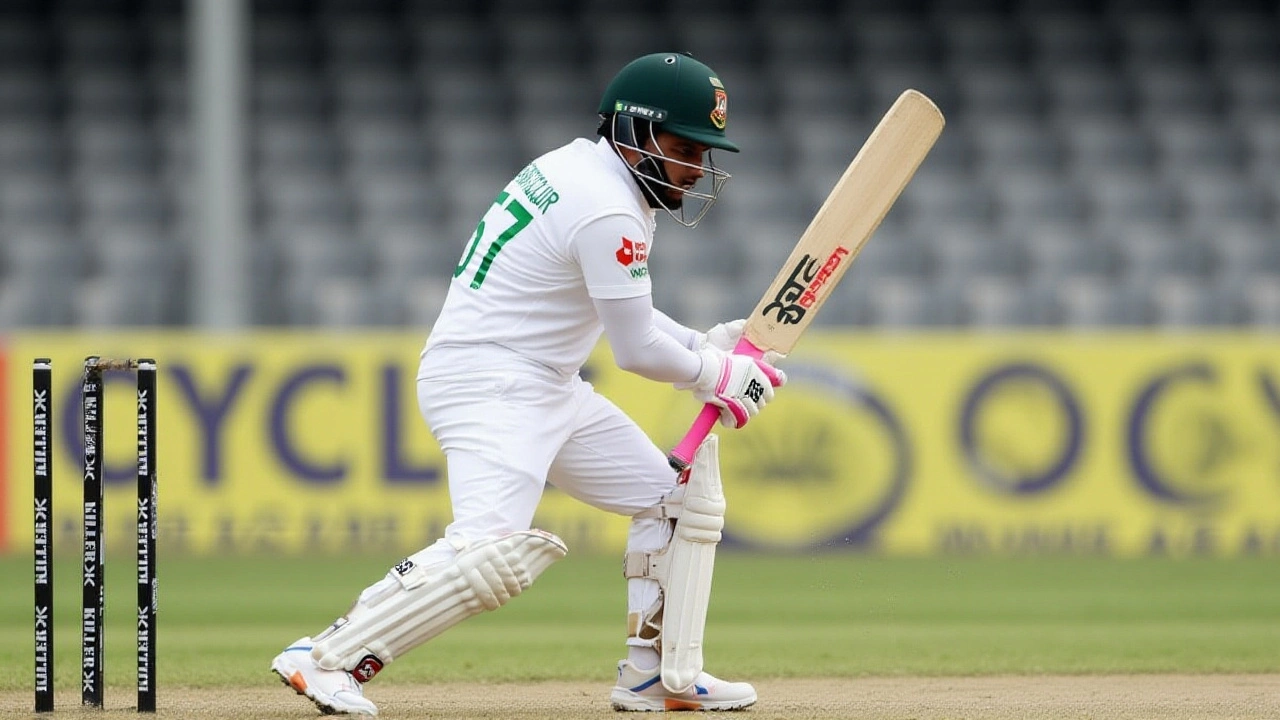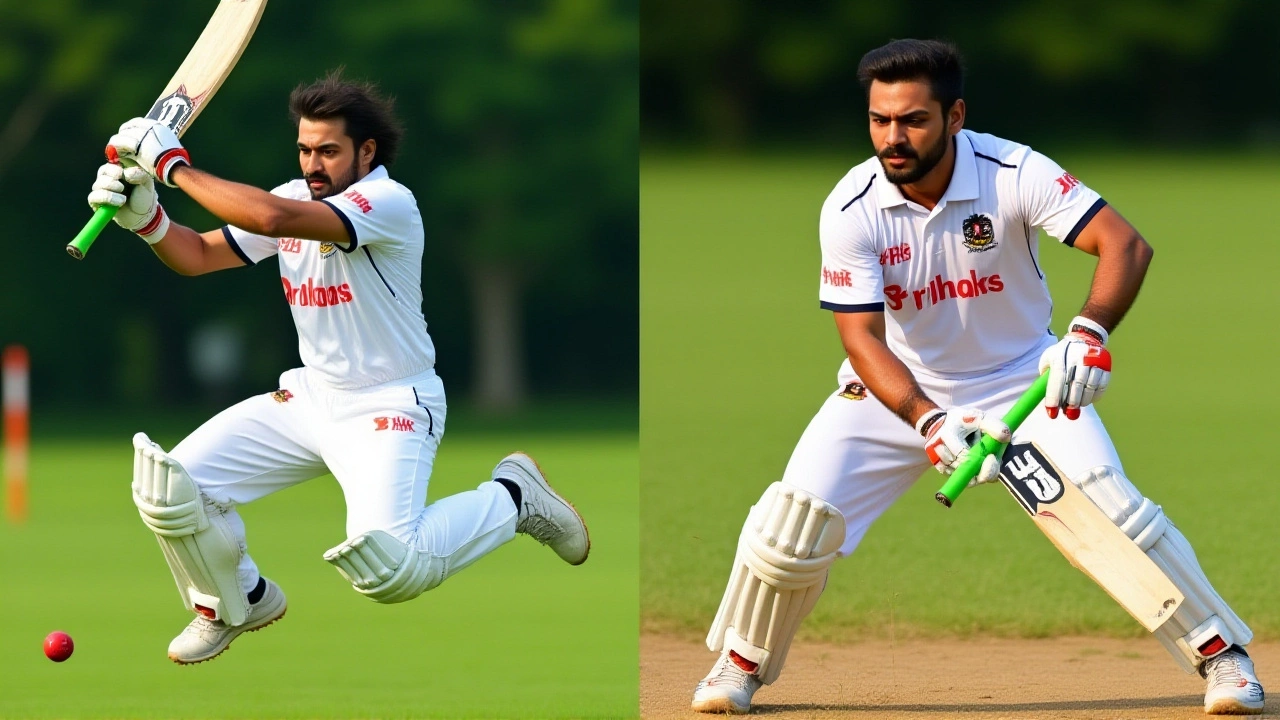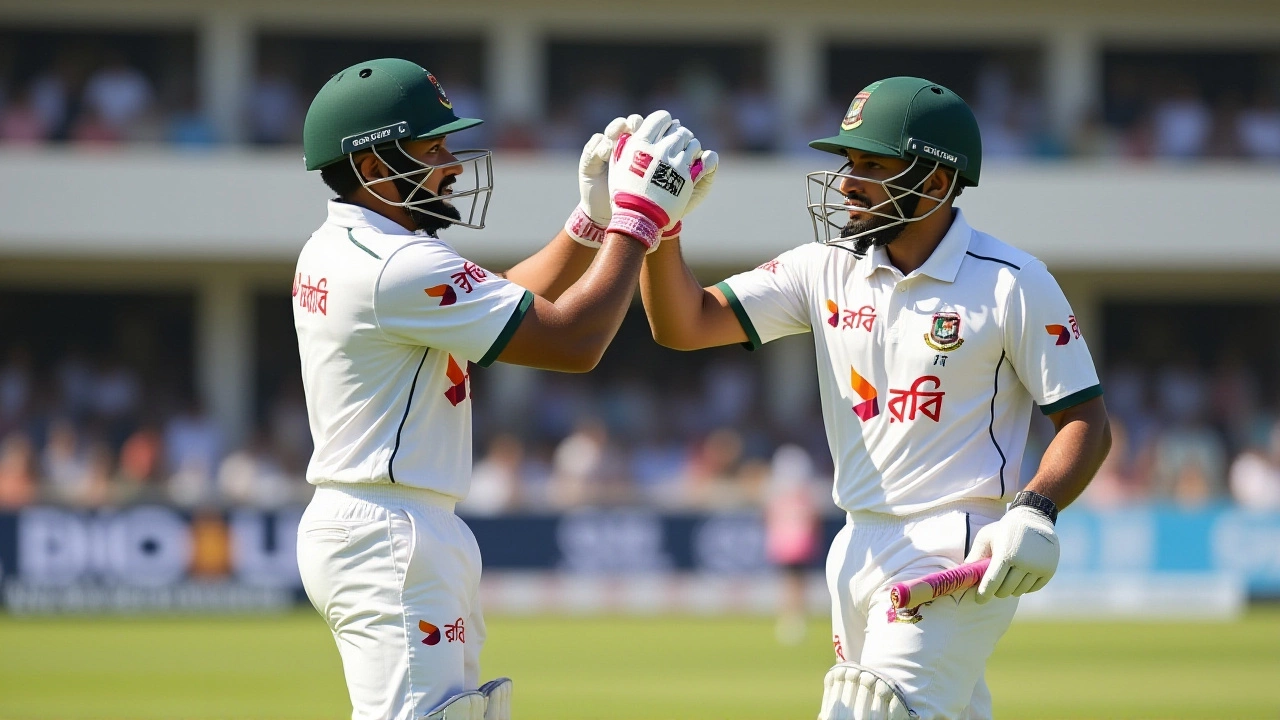On November 19, 2025, in the blistering heat of Doha, Sri Lanka A pulled off a nail-biting six-run win over Bangladesh A in a tense 20-over contest that had fans on the edge of their seats. The match, part of the Asia Cup Rising Stars 2025-26, wasn’t just another warm-up — it was a proving ground for the next generation of Asian cricket stars. Sri Lanka A posted 159 for 7 in their 20 overs, a total that looked modest until Bangladesh A’s chase unraveled under pressure, finishing at 153 for 6. The win kept Sri Lanka A alive in the group stage, but the real drama was still to come.
Group Stage Drama in Doha
The game began with Sri Lanka A’s top order collapsing like a house of cards. KNM Fernando was lbw for 9 off just 8 balls. VS Halambage, looking explosive, cracked 13 off 7 before being caught at deep midwicket. L Croospulle and MNK Fernando followed suit, both dismissed lbw within the first 10 overs. At 56 for 5 in the 12th over, it looked like Bangladesh A had the upper hand. But then came the grit. Unheralded middle-order batsmen steadied the ship, adding 103 runs for the last five wickets — a classic case of lower-order resilience. The extras — 11 wides alone — told their own story: tight bowling, nervous fielding, and a pitch that didn’t quite reward aggression. Bangladesh A’s attack, led by R Mondol (4-0-41-2) and Abu Hider (4-0-37-2), kept things tight early, but couldn’t close the deal. Their 12 wides in the final overs were the kind of mistakes that haunt teams in high-stakes games. Sri Lanka A’s final over, bowled by a debutant leg-spinner, saw Bangladesh A needing 18 off the last 6 balls — they managed just 11. The crowd, mostly expats and local cricket enthusiasts, erupted as the final wicket fell. Two points. One win. But the tournament was far from over.Shocking Semi-Final Exit at West End
Just two days later, on November 21, 2025, at 8:00 PM local time at the West End venue — widely believed to be in Qatar but officially unnamed — Sri Lanka A faced a far sterner test: Pakistan Shaheens. Sri Lanka A won the toss and did the unexpected: they chose to field first. It seemed like a smart move. Pakistan Shaheens, known for their explosive top order, looked shaky early. They slumped to 65 for 5 by the 14th over. But then came a counter-punch that no one saw coming. A 37-run partnership between lower-middle-order batters, including a gritty 28 from an unheralded all-rounder, lifted Pakistan Shaheens to 153 for 9. Their innings was a masterclass in survival — 11 wides again, but this time, the pressure told. Sri Lanka A’s chase began with promise. A 45-run opening stand gave hope. But the spinners, led by Pakistan’s off-spinner and a left-arm orthodox bowler who finished with 3 for 21, strangled the run flow. By the 18th over, Sri Lanka A needed 24 off 12 balls. They got 18. The last wicket fell with three balls to spare. The scoreboard read 148 all out. Five runs short. The players stood stunned. No cheers. No celebrations from Pakistan Shaheens — just quiet relief. This wasn’t a demolition. It was a battle won by inches.
Why This Matters for Asian Cricket
The Asia Cup Rising Stars 2025-26 isn’t just a warm-up. It’s the pipeline. These are the players who’ll wear the national jersey in 18 months. KNM Fernando, who struggled in this tournament, might still be on Sri Lanka’s radar — he’s 19 and has a clean strike rate. Abu Hider, with his 4 wickets across two matches, is being watched by Pakistan’s selectors. And R Mondol? He’s already been mentioned in internal PCB reports as a potential T20I candidate. The fact that both semi-finalists scored under 155 in 20 overs says something about the state of developmental cricket: it’s not about power-hitting anymore. It’s about control, discipline, and handling pressure. The pitch in Doha was slow. The dew factor was minimal. And the fielding standards? Barely above club level. Yet, the stakes felt Olympic. This tournament, organized by the Asian Cricket Council, is quietly becoming the most important developmental platform in Asia — more so than the U19 World Cup in some eyes. Why? Because these are players aged 18 to 23, not 17-year-olds. They’re facing professional bowlers, not junior spinners. They’re playing under lights, on international pitches, with real pressure.What’s Next for the Teams?
Pakistan Shaheens will now face the winner of the other semi-final — likely India A or Afghanistan A — in the final. Their depth, especially in spin, suggests they’re serious contenders. Sri Lanka A, meanwhile, will return home with mixed feelings. They showed fight, but their top order remains fragile. Their next challenge? The Emerging Teams Trophy in Sri Lanka next March. Several players from this squad are expected to be fast-tracked into the national T20I setup. Bangladesh A, eliminated in the group stage, will have to reassess their middle-order strategy. Their captain, a 21-year-old wicketkeeper-batter, admitted after the match: “We didn’t adapt. We tried to play our way, but the conditions didn’t allow it.” That’s the lesson here — adapt or get left behind.
Behind the Scenes
No official statements were released by either team. No coach interviews. No press conferences. That’s the reality of developmental cricket — it’s gritty, quiet, and often overlooked. But the scouts? They’re everywhere. One former Sri Lankan international told me off-record: “If you’re not watching these matches, you’re missing the future of Asian cricket.” And he’s right.Frequently Asked Questions
Who won the Asia Cup Rising Stars 2025-26 final?
The final result isn’t confirmed in available reports, but Pakistan Shaheens advanced to the final after defeating Sri Lanka A by 5 runs in the second semi-final on November 21, 2025. They are set to face either India A or Afghanistan A, depending on the outcome of the first semi-final, which was not detailed in the provided sources.
Why is the Asia Cup Rising Stars important for young cricketers?
It’s one of the few platforms where national 'A' teams from Asia compete under real tournament conditions — day-night matches, international umpires, and high-pressure scenarios. Performances here directly influence selection for senior national squads. Several current Test players from Sri Lanka and Pakistan first gained attention in similar tournaments.
Where was the West End venue located?
The exact location of the West End venue isn’t specified in match reports, but given the tournament’s grouping in Qatar and the prior match in Doha, it’s almost certainly the same country. West End is likely a colloquial name for a cricket ground in Qatar, possibly the Oman Cricket Academy Ground or another facility used for international 'A' team fixtures.
How did Sri Lanka A’s batting perform across both matches?
Sri Lanka A struggled with consistency. Against Bangladesh A, they scored 159/7, with only two batsmen reaching double figures. Against Pakistan Shaheens, they collapsed to 148 all out, with no batter scoring more than 37. Their top order failed in both games, and their middle order, while resilient in the group stage, couldn’t handle Pakistan’s disciplined spin attack in the semi-final.
Were there any standout bowlers in the tournament?
Yes. R Mondol of Bangladesh A took 2 wickets against Sri Lanka A and later bowled economically for Pakistan Shaheens in the semi-final. Abu Hider, also from Bangladesh A, claimed 2 wickets in the group match and was noted for his yorkers under pressure. Pakistan Shaheens’ left-arm spinner, whose name wasn’t fully reported, took 3 for 21 in the semi-final — the most impactful bowling performance of the tournament so far.
What does this tournament reveal about the future of Asian cricket?
It reveals that Asia’s future lies in adaptability, not just power. Teams that rely on explosive openers are getting exposed. Spinners, disciplined fielding, and tactical awareness are now the differentiators. The gap between senior and 'A' teams is narrowing — meaning future international squads will be more prepared than ever before.








Write a comment